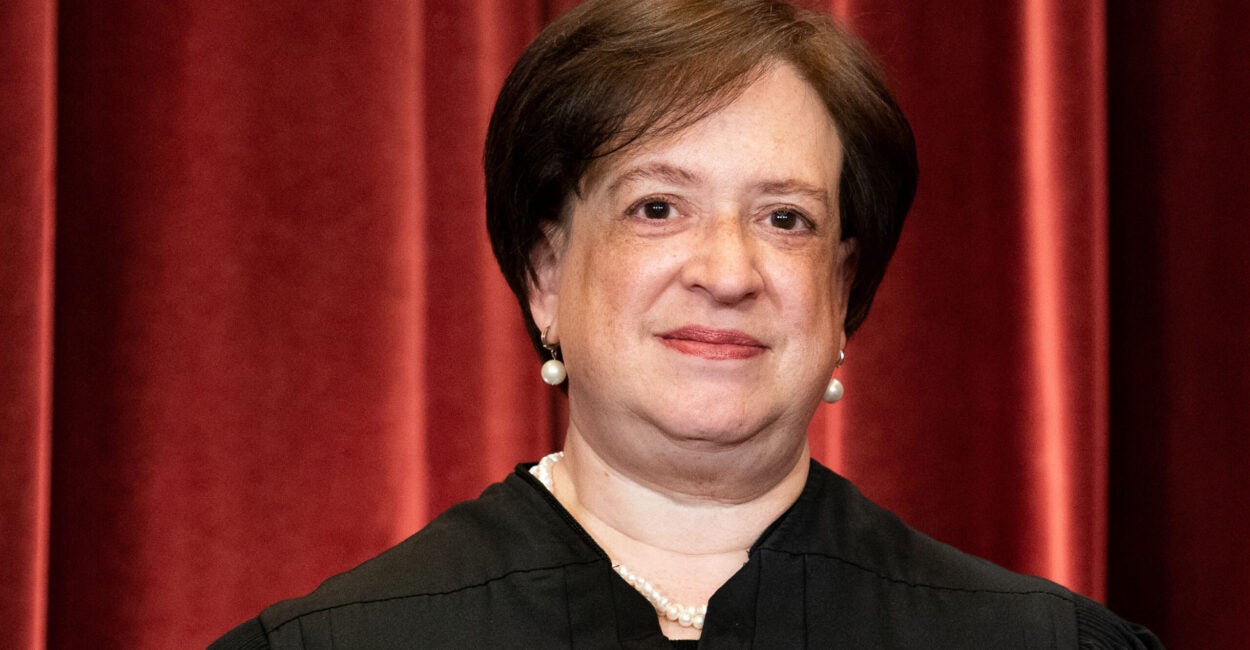


When judges change their mind, they explain their reasons. Or at least they ought to, because that’s what makes their judgments trustworthy. But when the Supreme Court decided Trump v. CASA this term, Justice Elena Kagan suddenly changed her mind on universal injunctions—and didn’t explain why.
There, the Supreme Court held that federal courts likely don’t have authority to issue universal injunctions.
These injunctions are court orders that apply to everyone, not just parties in a case, and the court’s decision was a rebuke to the left-wing judges who used them to prevent the government from enforcing President Trump’s executive orders.
The case also gave the court an opportunity to remind lower court judges of their constitutional role: “federal courts do not exercise general oversight of the Executive Branch; they resolve cases and controversies.”
This reasoning sounds like something Kagan would agree with, since she has repeatedly criticized universal injunctions and often calls for “judicial humility.”
In 2022, she told an audience at Northwestern University Law School that it “can’t be right that one district judge can stop a nationwide policy in its tracks and leave it stuck for the years that it takes to go through a normal process.”
She also criticized emergency actions more broadly, remarking that the court’s calendar used to be “spaced out so that we would have a break before we went back to the hothouse of decision-making. And just the relentless bringing of these emergencies petitions make that not the case anymore.”
Given Kagan’s past comments, Trump v. CASA seems like the perfect opportunity for her to help end universal injunctions, lower the stakes of emergency filings, and remind judges to be a little more modest.
But Kagan didn’t join the majority in CASA. Instead, she quietly joined Justice Sonia Sotomayor’s dissent—in which Sotomayor called the court’s decision to end lower courts’ use of universal injunctions a “grave attack on our system of law” that leaves “[n]o right…safe.”
Why did Kagan change her position on nationwide injunctions so dramatically, and why was she willing to join a dissent filled with inflamed rhetoric but little substance?
She didn’t say.
One theory is that Kagan has become more politically motivated during her time on the court. If that’s true, one would expect court data to show that over time, Kagan has become more likely to join other liberal justices’ dissents in partisan cases instead of expressing her own reasoning in a separate dissent.
But data from past terms doesn’t necessarily support this view.
Although Kagan wrote only four dissents this term, that’s consistent with her frequency of dissent in prior terms. Furthermore, according to SCOTUSBlog, in the 2024 term, she was in the majority in 83 percent of cases—the fourth most of any justice, and more than staunch conservatives Justice Clarence Thomas and Justice Samuel Alito, even despite the court’s 6—3 split along partisan lines.
Another potential explanation—suggested by Jonathan Adler, writing for the Volokh Conspiracy—is that Kagan’s comments in 2022 reflected her views on good public policy but not necessarily her view of the law. In other words, Kagan may believe that universal injunctions are bad policy but legally justified.
If that’s the case, however, it’s hard to explain why she joined a policy-motivated dissent that lacks persuasive legal justification for universal injunctions. Sotomayor began her dissent by asserting that Trump’s executive order on birthright citizenship is “patently unconstitutional”—even though that wasn’t the question before the court. From that starting point, Sotomayor concluded that to “allow the Government to enforce it against even one newborn child is an assault on our constitutional order and antithetical to equity and public interest.”
While this is an emphatic conclusion about policy, it’s not a convincing answer to the question in the case. As Justice Amy Coney Barrett put it, the “issue before [the Court] is one of remedy: whether, under the Judiciary Act of 1789, federal courts have equitable authority to issue nationwide injunctions.” Unless these injunctions have a “founding-era antecedent,” courts can’t use them.
Sotomayor tried to draw an analogy between universal injunctions and Founding-era “bills of peace,” which allowed groups to litigate in English courts. But, as Sixth Circuit Chief Judge Jeffrey Sutton wrote, the “domesticated animal known as a bill of peace looks nothing like the dragon of nationwide injunctions”—and the majority in CASA agreed.
Most telling of all, Sotomayor’s dissent ignored all of the historical scholarship by Professor Samuel Bray, the leading expert on historical remedies, who has proved that nationwide injunctions have no historical basis in Founding-era American courts or their English predecessors.
Sotomayor’s policy stance is clear throughout her dissent, in which she called Trump’s executive order “blatantly unlawful and harmful.” As Barrett noted, however, “as with most questions of law, the policy pros and cons are beside the point.”
If, in 2022, Kagan thought that universal injunctions are bad policy but good law, her decision this year to join a dissent that’s all about policy and thin on legal analysis is baffling—unless it has something to do with the fact that in 2022, courts were blocking President Biden’s executive orders, while in 2025, they’re blocking Trump’s.
But all this is just speculation. Unless Kagan publicly clarifies her reasoning, we can’t know why she changed her mind so dramatically. And no matter the explanation, it’s unacceptable for a justice to comment so publicly on an issue only to reverse course and refuse to explain herself.
